Pairing of calves - just a new fashion trend?
26. Februar 2021 — Biological, Calf Husbandry — #Organic #CalfTel #Mini-group #Pair #Social #TwinHutchThe first "proper" calf hutch for mini groups
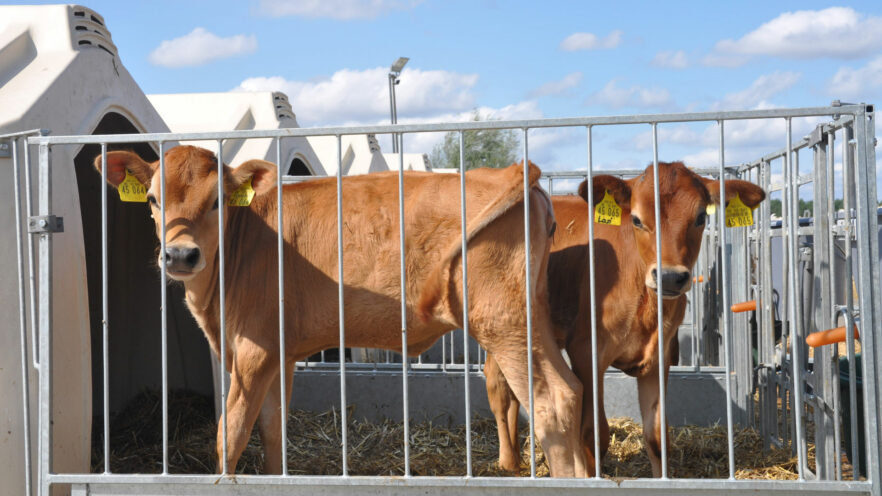
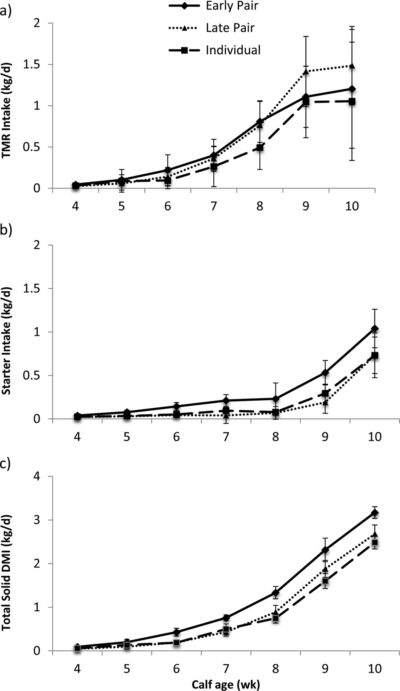
A study in 2015 from the same research team was able to prove that the higher concentrate intake also led to greater growth. Three groups were formed in this experiment:
Early Pair: pair groups after 1 week
Late Pair: pair groups after 6 weeks
Individual: individual housing up to the weaning period
After 6 weeks, the concentrate intake for the 'early pair’ was considerably higher at 180 g/day than the other two groups (70 g/day ‘late pair’; 50 g ‘individual’).
This advantage continued. The concentrate intake was also considerably higher for the ‘early pairs’ following weaning at 8 weeks compared to the two other groups (graph b).
Even when the intake of TMR did not differ significantly between the groups (graph a), the total solid dry matter intake of the calves in the 'early pair’ was significantly higher (graph c).
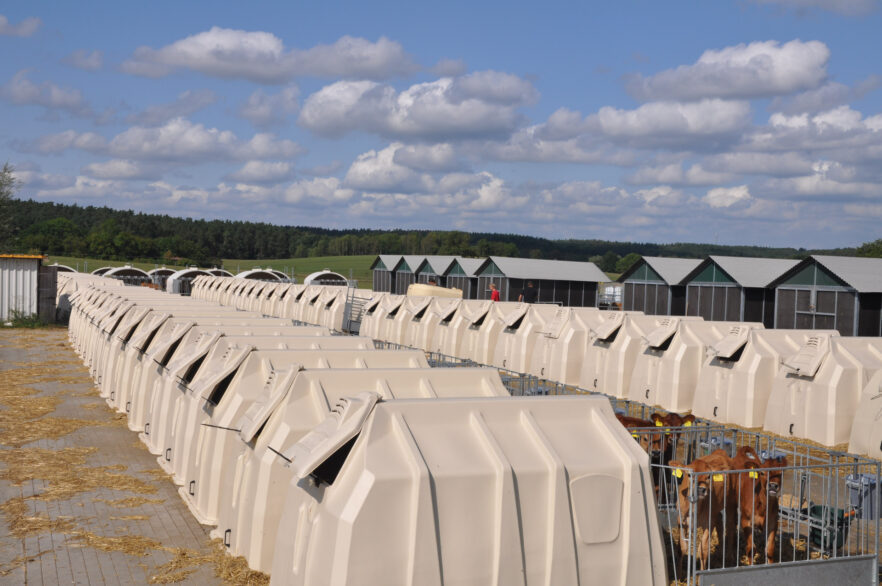
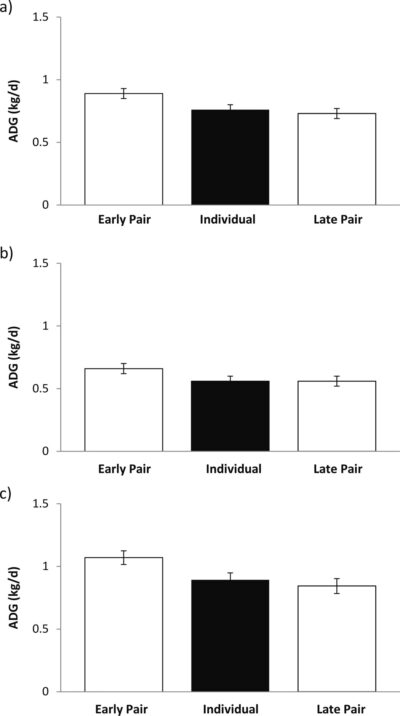
The higher energy intake also led to ever increasing growth during the experiment (ADG = average daily gain). In the weaning phase, the growth advantage in the ‘early pair’ group did not initially differ significantly. However, with a strong growth spurt following the weaning phase, this group was able to grow from birth up to 10 weeks by 890 g/day, whereas the two groups grew by the following amounts over the course of the entire experiment: ‘individual’ 760 g/day and the ‘late pairs’ 730 g/day.
The Costa research team et.al. (2015) came to the conclusion that the calves housed in pairs start to feed on dry feed earlier as a result of better social behaviour and cognitive learning. The higher feed intake then led to the stronger growth of the calves.
Other studies have shown us that this early growth positively influences the development of the offspring and for heifers, it can lead to earlier AFC and increased milk production during the first lactation.
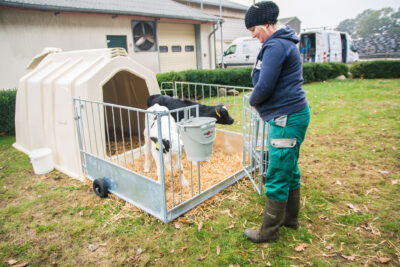

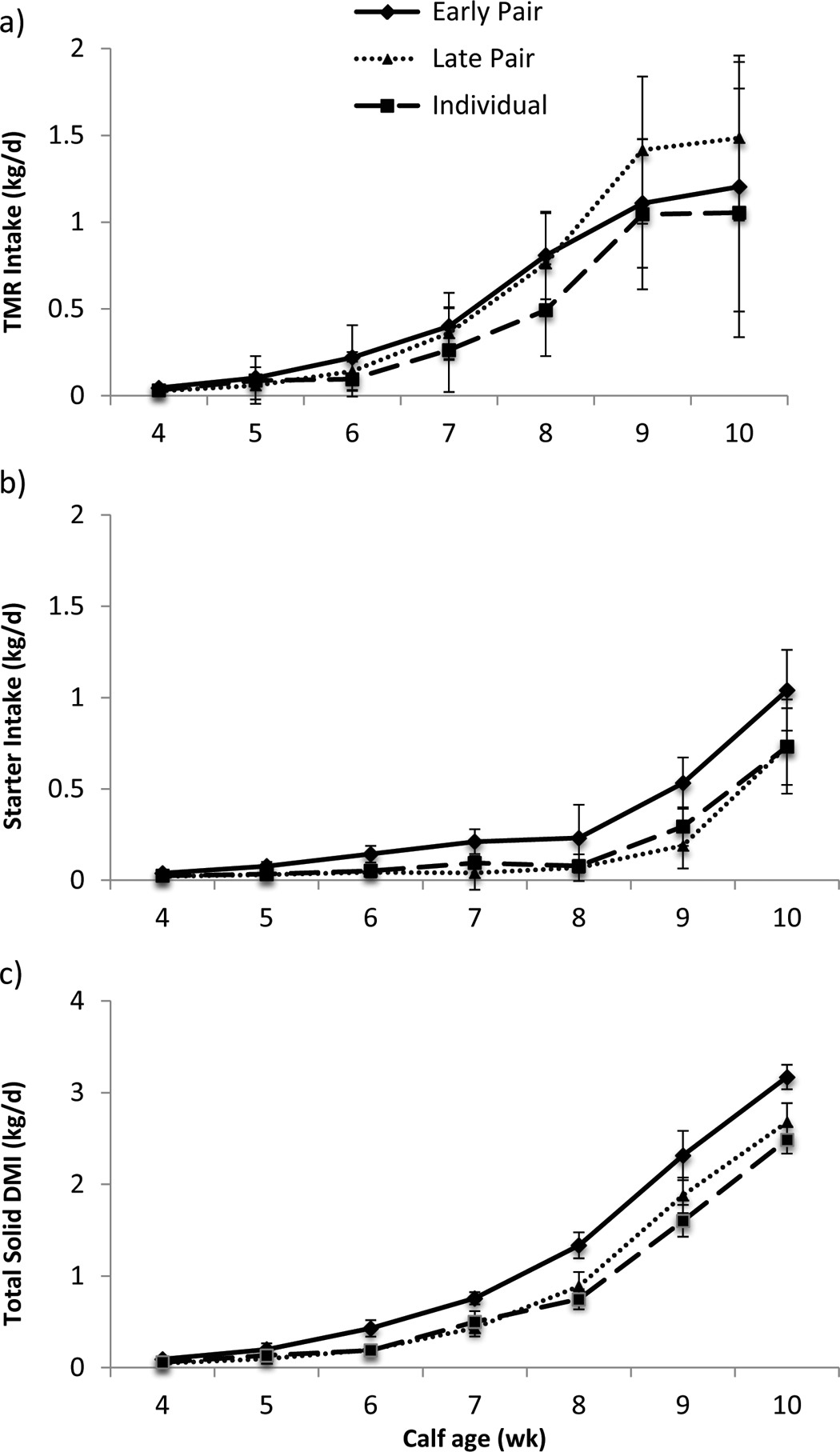 Figure 1. Least squares means (±SE) of a) TMR (kg of DM), (b) calf starter (kg of DM), and (c) solid feed DMI (kg of DM) for early-paired (paired at 6 ± 3 d of age; n = 8 pairs), late-paired (paired at 43 ± 3 d of age; n = 8 pairs) and individual calves (n = 8 calves). Weekly averages are shown in relation to calf age, with age ranging from 4 to 10 wk.
Figure 1. Least squares means (±SE) of a) TMR (kg of DM), (b) calf starter (kg of DM), and (c) solid feed DMI (kg of DM) for early-paired (paired at 6 ± 3 d of age; n = 8 pairs), late-paired (paired at 43 ± 3 d of age; n = 8 pairs) and individual calves (n = 8 calves). Weekly averages are shown in relation to calf age, with age ranging from 4 to 10 wk.
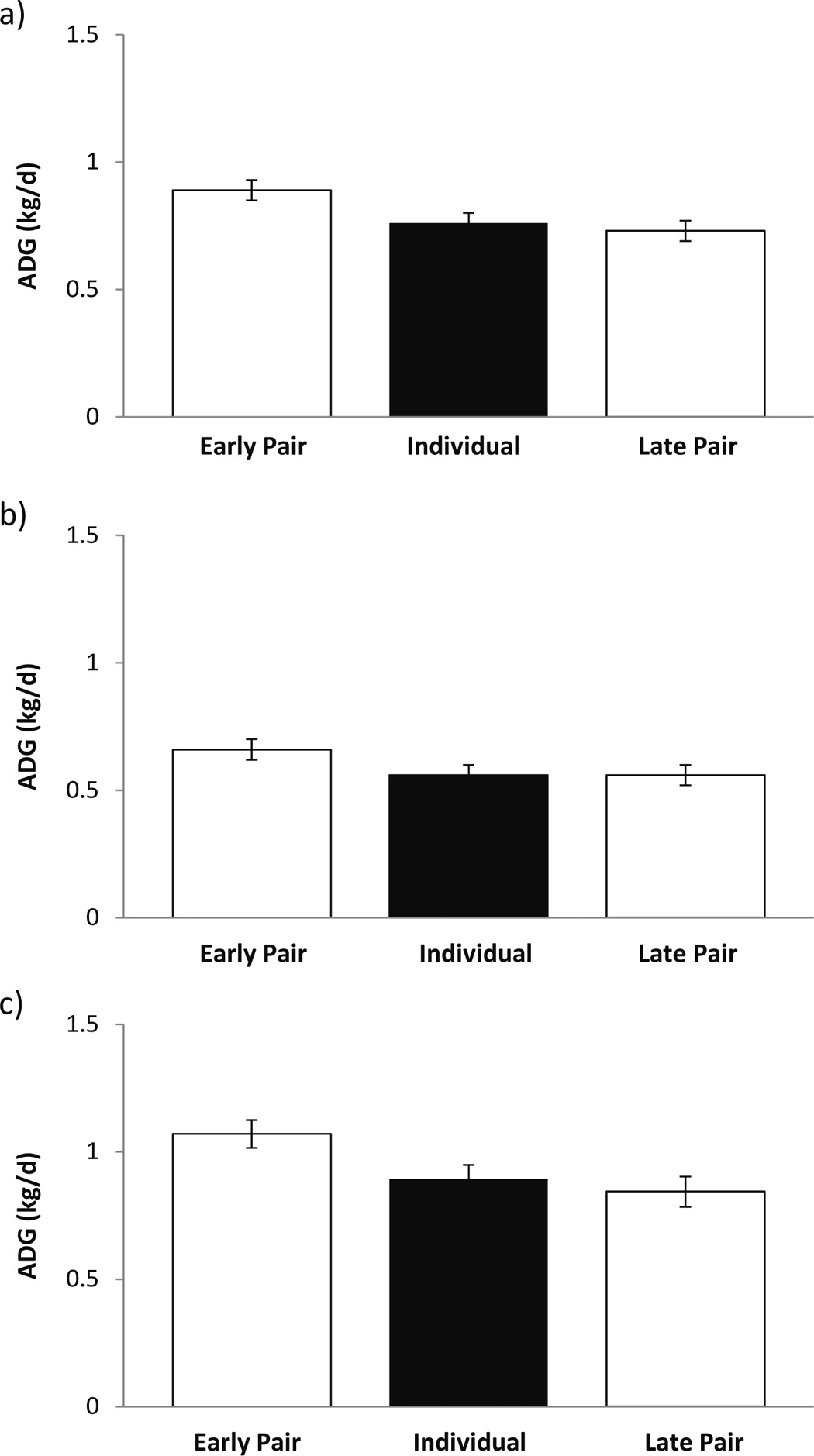 Least squares means (±SE) ADG (kg/d) for early-paired (paired at 6 ± 3 d of age; n = 8 pairs), late-paired (paired at 43 ± 3 d of age; n = 8 pairs), and individually housed calves (n = 8 calves) during (a) the entire experimental period (wk 3 to 10) and separately from (b) the preweaning period (wk 3 to 6) and (c) the weaning period (wk 6 to 10).
Least squares means (±SE) ADG (kg/d) for early-paired (paired at 6 ± 3 d of age; n = 8 pairs), late-paired (paired at 43 ± 3 d of age; n = 8 pairs), and individually housed calves (n = 8 calves) during (a) the entire experimental period (wk 3 to 10) and separately from (b) the preweaning period (wk 3 to 6) and (c) the weaning period (wk 6 to 10).